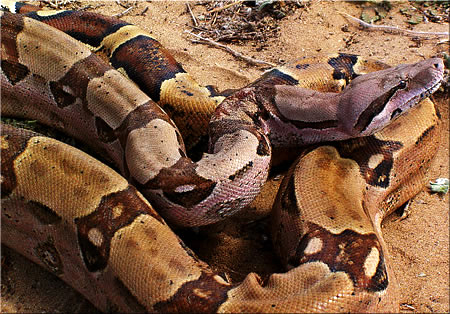Update Nov 4 2010: After reading some more about the immaculate conception, I learned that it is actually not the same as the virgin birth of Jesus according to Christian doctrine. So the title of this post is somewhat misleading, for which my apologies.
Parthenogenesis, usually called immaculate conception when it occurs in humans, is a type of asexual reproduction. Many invertebrate species do it and cases of facultative (i.e., without human intervention) parthenogenesis in vertrebrates have been reported as well. In a forthcoming paper in Biology Letters, Booth and colleagues describe a case of parthenogenesis in the Boa constrictor. Apparently, this is the first time that parthenogenesis in Boa constrictors has been shown to produce viable offspring.

Source: Wikimedia Commons
The baby snakes are a little “off”, though. In Boa constrictors (and in many other species, including birds), females are heterogametic, which means that they have two different sex chromosomes (ZW). Male snakes are homogametic, having two of the same sex chromosomes (ZZ). (Note that it is the other way around in mammals, in which the males are heterogametic (XY) and the females homogametic (XX).) The asexually reproduced snakes are female, but not of the ordinary type, since they carry two WW chromosomes. The authors are puzzled by the lack of males (ZZ) in the litter and suggest that the mother snake may have been a genetic freak, lacking a Z chromosome.
References
Booth, W., Johnson, D. H., Moore, S., Schal, C., & Vargo, E. L. (in press). Evidence for viable, non-clonal but fatherless Boa constrictors. Biology Letters. doi:10.1098/rsbl.2010.0793